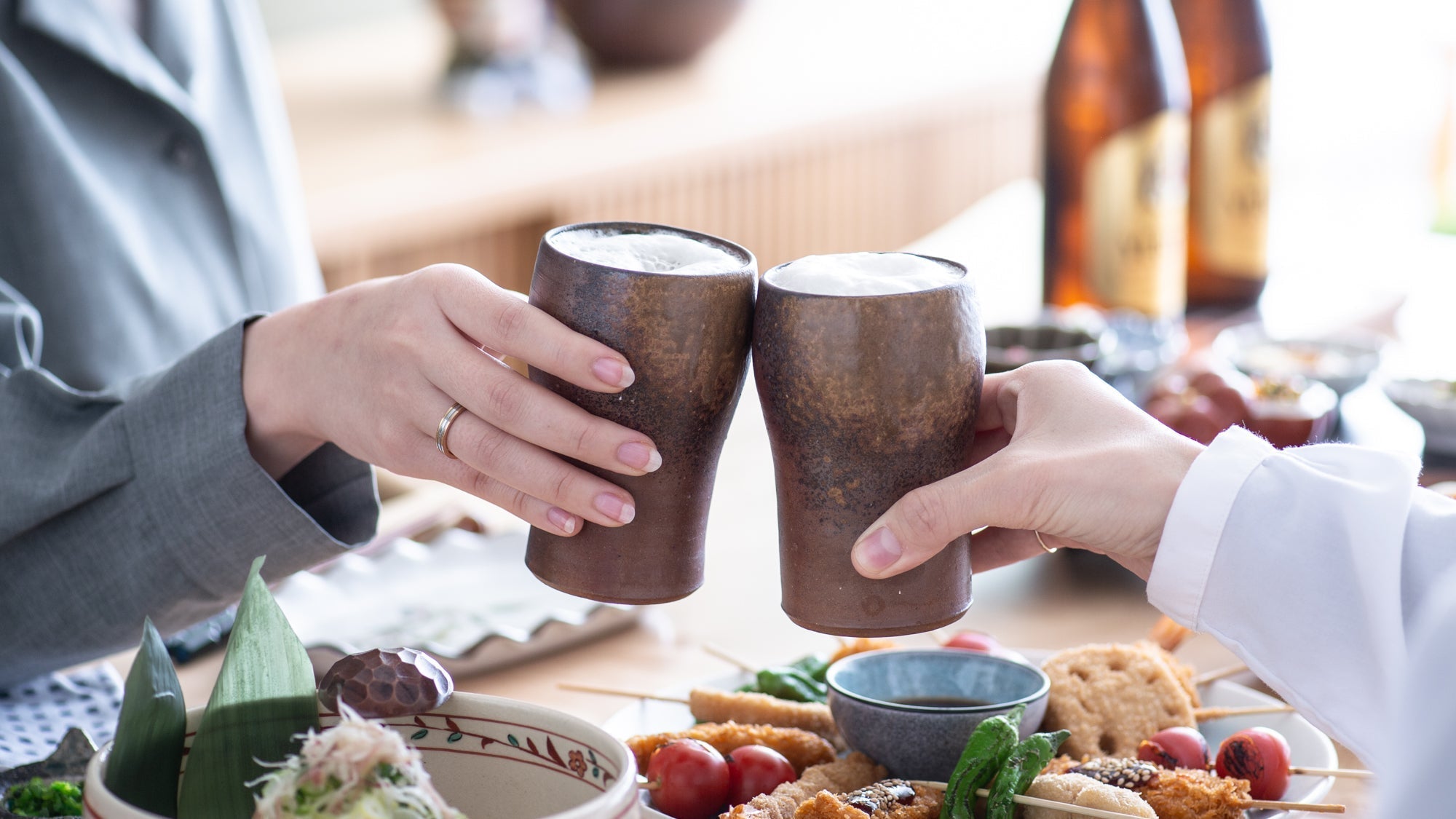
Eating Japanese Food? Pair It with Japanese Beer
Written by Ito Ryo
When enjoying Japanese cuisine, what kind of alcoholic beverages do you prefer to drink?
A recent survey found that foreign visitors to Japan prefer Japanese draft beer over sake in restaurants, highlighting its growing popularity. This preference is shared by foreign staff at MUSUBI KILN, who appreciate Japanese beer for its refreshing, light, slightly acidic taste with a mild bitterness and grainy aroma. They particularly enjoy its role in social settings, with one noting the refreshing quality of a first sip after a long day.
Japanese beer, initially popular in cafes and restaurants before World War II, became widely favored during the post-war economic boom, aided by the prevalence of electric refrigerators in homes. Today, it remains a staple beverage at Japanese dining tables.
In this article, we will explore the reasons why Japanese beer and Japanese cuisine pair so well together, introduce some of the most recommended brands for pairing, and share tips for enjoying them to the fullest.
tables of contents
Japanese Beer's Brewing Process

The initial mashing process involves crushing ingredients like barley malt, rice, or corn into powder, soaking them in hot water to convert the starch into sugar through enzymatic action, and then filtering to produce "wort." This wort is then boiled, hops are added for a unique bitterness and refreshing aroma, and finally, yeast is added for fermentation.

Bottom fermentation is named because the yeast settles at the bottom of the tank after fermentation. Compared to top fermentation, it occurs at a lower temperature of 5-10°C (41-50°F) and over a longer period of 7-10 days. This process produces beer with a clean taste, higher alcohol content, and stronger carbonation, resulting in a refreshing taste.
The type of beer made through bottom fermentation is called "lager," while the type made through top fermentation is called "ale."
Currently, in Japan, the "lager" type, particularly the "pilsner" style, accounts for 90% of the beer market. This "pilsner" style of beer is characterized by its versatility with various dishes, making it an ideal beer to accompany meals, especially enhancing the delicate flavors of Japanese cuisine.
Why Japanese Beer is Primarily Pilsner

By the early 20th century, two major companies dominated the Japanese beer market. Because these companies adopted the "pilsner" style, it became synonymous with beer in Japan and remains the mainstream to this day.

Lagers, known for their refreshing and smooth taste, contrast with ales, which are characterized by their fruity aroma, rich taste, and distinctive flavors.
Well-known examples of the "lager" type include Budweiser, Miller, Corona, Carlsberg, and Heineken, while examples of the "ale" type include Hoegaarden White, Chimay Blue, Draft Guinness, and Bass Pale Ale.
The Role of Raw Japanese Ingredients

In addition to the main ingredients of malt, hops, water, and yeast, Japanese beer often utilizes secondary ingredients, commonly referred to as adjuncts. By incorporating rice, a staple food in Japan, as a well-balanced adjunct, the beer acquires a clear and light flavor, making it an ideal companion for meals.
In contrast, beers like those from Germany, brewed with 100% malt and no adjuncts, result in a beer with a rich malt flavor, more suited to be enjoyed on its own rather than with a meal.

Additionally, in the Japanese beer market, major manufacturers have been fiercely competing for market share for many years, tirelessly seeking products that complement Japanese cuisine. This pursuit has contributed to the current situation in Japan, where there is an abundance of domestic beers that pair exceptionally well with Japanese food.
Three Japanese Brands for Beer Pairings
The first one is Kirin's lager, a product from a long-established brewery born in the Meiji era ( 1868 CE - 1912 CE ). Characterized by a distinctive hop bitterness and a well-balanced harmony of sweetness and acidity, Kirin is also known for its Ichiban Shibori, a pilsner beer made with 100% malt without using rice, offering a clean taste by using the first-pressed wort with less impurity, balancing richness and crispness.



Like the concept of pairing wine with local cuisine from the same region as its grape origin, it might be interesting to try beers made with rice and water from a specific area of Japan alongside traditional Japanese dishes from the same region.

Tips to Fully Enjoy Japanese Beer

Finally, let's introduce some tips to enjoy Japanese beer more deliciously.
One of Japan's renowned beer craftsmen, Yamada Kazumi, states in his book (Yamada, Kazumi. Biiru Shokunin, Oishii Biiru wo Kataru, Kobunsha-shinsho, 2001.) that "the taste of beer can vary depending on how it is poured." According to Yamada, pouring the beer in several stages, allowing the foam to form properly, makes it exceptionally delicious. He outlines the procedure as follows:
- Choose a clean glass that isn't too wide at the mouth.
- Chill both the glass and the beer to about 8°C.
- Pour gently into a vertically held glass at first, then more vigorously to create foam.
- Stop pouring when the foam nearly overflows, wait for it to settle and recede slightly.
- Gently top up the beer, lifting the existing foam so that it rises about 1 cm (0.4 in) above the glass.
- Touch the bottle to the foam and gently pour more, raising the foam to about 1.5 cm (0.6 in) from the rim of the glass.
Yamada also emphasizes the importance of beer foam, stating, "The foam is crucial for beer. A properly formed, creamy head softens the initial taste and improves the drinking sensation. It also acts as a lid, preventing the carbon dioxide from escaping too quickly, thus prolonging the beer's deliciousness."

Japanese Beer is Perfect with Japanese Food

Whether dining out during a trip to Japan or enjoying Japanese cuisine in your own country, don't forget to kanpai! "cheers!" with Japanese beer.







Leave a comment
This site is protected by hCaptcha and the hCaptcha Privacy Policy and Terms of Service apply.